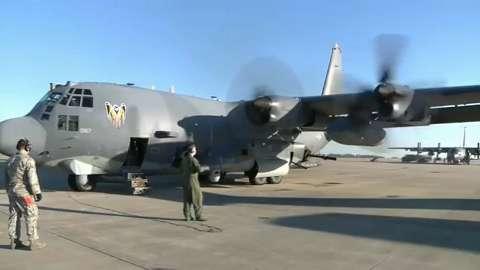
Those features have made the gunship one of the most celebrated and highly valued aircraft among ground troops. In addition to being heavily armed, the AC-130 can remain over the battlefield for long periods, though its dwell time is limited by the cover of darkness and other conditions. The AC-130 gunshipĪn AC-130J crew operates the gunship's 105 mm howitzer during training in Romania in May 2021. Hitting something is not as simple as seeing it, since gravity, elevation, speed, and atmospheric conditions affect the trajectory of the AC-130's artillery and cannon fire, but having those aids is still invaluable for gunship crews. While flying at night, it's very useful to have aids to see where exactly you are aiming, and the AC-130 has other laser-targeting and range-finding sensors to aid in the crew's marksmanship. The green beam proved extremely useful for "managing a very chaotic situation on the ground," Slife said, adding that gunship crews used it to communicate with ground forces about threats, thereby "building the situational awareness for the force on the ground and keeping the adversaries kind of pushed back while the evacuation was underway." Carly Kavishĭuring the chaotic Kabul evacuation, AC-130 gunships and AH-64 attack helicopters provided air cover for troops on the ground, who had the challenging mission of evacuating tens of thousands of people who crowded the airport to escape the Taliban.ĭuring the evacuation, AC-130J crews used their green lasers, which are visible to the naked eye, to illuminate people who breached the Kabul airport compound, allowing ground forces intercept them or drive them off. "So it's not a particularly popular capability among the crews because the other end of that green beam is connected to me, and I don't necessarily want to highlight my position like that."Īn AC-130J conducts call-for-fire training with Special Tactics operators in Florida in May. The laser is meant "to let the adversaries know that you see him," Slife said at an event hosted by the Air & Space Forces Association. Using the laser has some downsides - mainly that it reveals the gunship's position, making it easier to target from the ground. The heavily armed AC-130 usually operates at night because its bulky size and need to fly relatively low and slow to fire accurately make it more vulnerable than other aircraft. Air Force Special Operations Command started putting the laser on several of its aircraft around 2010.

While discussing the performance of special-operations crews during the Kabul evacuation, Slife referred to a targeting technology that air commandos use and affectionately call "the green beam."ĪC-130 crews use the green beam - which Slife called a "giant green laser pointer" - both to point things out to friendly forces and to deter adversaries by letting them know that they're in the gunship's sights.

An AC-130J crew identifies a target with green light during an exercise in Florida in May.


 0 kommentar(er)
0 kommentar(er)
